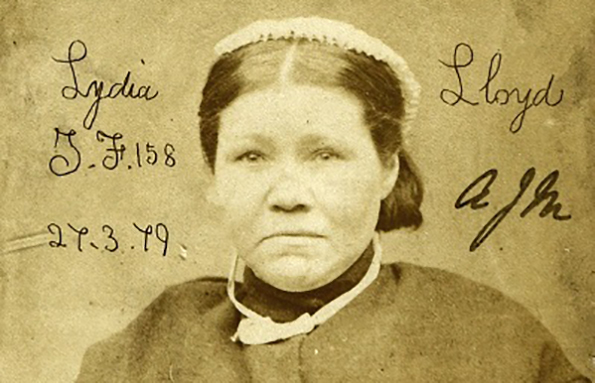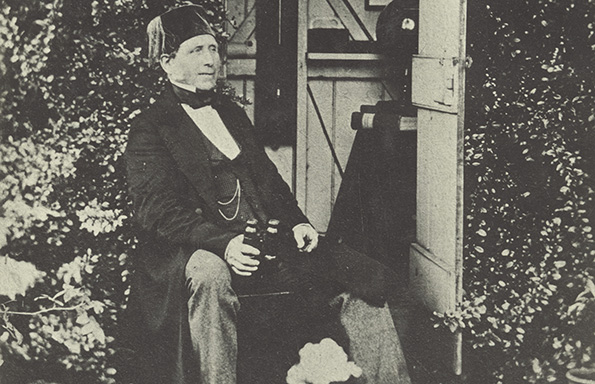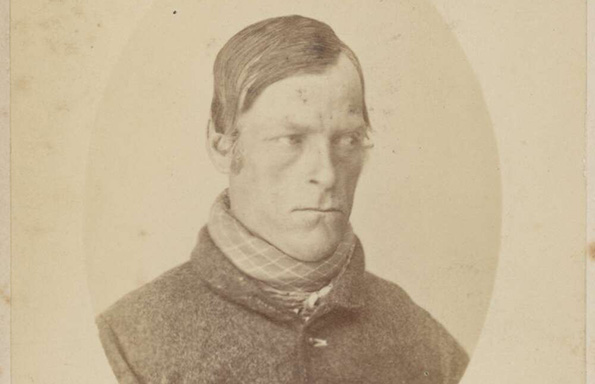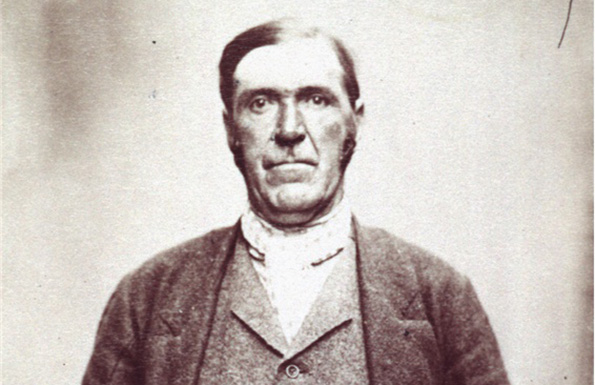
Lydia Lloyd was a prostitute, habitual drunk and thief, born 1843
Family historians, teachers, crime writers and academics can follow the lives of people convicted and transported to Australia or imprisoned in Britain using a vast, new, free online resource.
The Digital Panopticon website draws on over four million records to allow users to uncover how punishment affected the lives of 90,000 individuals convicted of crimes at the Old Bailey between 1780 and 1925, including those uprooted by the UK criminal justice system to carry out their sentence in the British Empire’s then newly established penal colonies in Australia.
By providing a wide range of search fields, including name, year and place of birth, criminal record, height, eye and hair colour, among others, it is possible to compare the impact of transportation and imprisonment on reoffending, desistence, family lives and health.
The free website also allows users to search by group, such as those convicted of a certain crime, and then download entire data sets for analysis.
Researchers have discovered that:
- Many convicts did not serve the punishments as originally laid out, including many sentenced to transportation that never left Britain
- British convicts that were transported to Australia tended to desist from offending once married with children.
- Children born to transported convicts were healthier and taller than those born to convicts imprisoned in Britain.
- A dramatic increase in record-keeping during the 19th century became a new form of state control over the criminal.
Project lead, Professor Barry Godfrey, a social historian at the University of Liverpool, said: “The amount of information is staggeringly huge, it’s a resource the likes of which we have never had before.
“It is one of the largest genealogical resources and one of the first to catalogue in chronological order so users can follow the whole life of a person.”

Francis Abbott was convicted of fraud in 1844 and transported to Australia, where he became a renowned astronomer and successful watchmaker
Professor Bob Shoemaker, at the University of Sheffield, said: “Combining extraordinarily rich records with the latest digital humanities methodologies, this free resource demonstrates the impact of punishment on health, family circumstances and future patterns of offending, with clear relevance to contemporary penal regimes.”
Tim Hitchcock, Professor of Digital History at the University of Sussex, said: “The Digital Panopticon helps us understand history from below in a new way – from the perspective of the hundreds of thousands of working people caught up in a global system of policing, punishment and empire.
“The material reveals the lived experience of trial and imprisonment. It really does change our understanding of the history of criminal justice, particularly the importance of both the criminal trial and plea bargaining to the system’s evolution.”

Thomas Griffin was convicted of burglary in 1847, aged 19, and transported to Australia. He continued to commit similar crimes in the colony for the next 30 years
Professor Deborah Oxley, at the University of Oxford, said: “Social and economic history has entered a new era.
“Mass biography, connecting multifarious records across individual lives, offers new opportunities for understanding the past. Gaze afresh at the birth of the modern criminal justice system, as it journeyed from death and transportation to detention, from inside this Digital Panopticon.”
Professor Hamish Maxwell-Stuart, at the University of Tasmania, said: “The Digital Panopticon site will provide access to many records hitherto unavailable to Australian based researchers.
“It will prove a particularly important resource for family historians, enabling them to track the lives of the men and women sentenced in the Old Bailey to ‘leave their country for their country’s good’.”

Described as ‘a giant’ – he was 5ft 11in – Mark Jeffrey was found guilty of offences both in Britain and Australia, it seems frequently prompted by food availability. He wrote an autobiography at the age of 68, many years after transportation
The website forms part of the wider Digital Panopticon project, funded by the Arts and Humanities Research Council (AHRC), and has been developed by the University of Liverpool, University of Sheffield, University of Oxford, University of Sussex and University of Tasmania in Australia. The technical work, including data assembly, record linkage, and website creation was carried out by the Digital Humanities Institute at the University of Sheffield.
The new resource also includes data from genealogy sites Findmypast and Ancestry, as well as the National Archives and record collections in Australia. Users of the Digital Panopticon are able to see if additional materials related to their research are available in these external sources.
The public launch of the Digital Panopticon website takes place at the Digital Panopticon Conference, hosted at St George’s Hall, Liverpool from September 13-15 2017.
Find out more by visiting https://www.digitalpanopticon.org/ or on twitter @digipanoptic